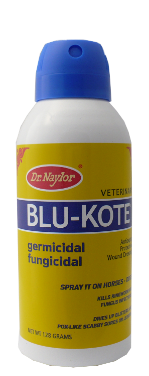Galls in horses happen when their saddles and harnesses don't fit well and rub against them a lot. It usually occurs under the saddle or under harnesses on the shoulder area.

The signs can vary depending on how bad it is and if there's any infection. Mild cases show redness, bumps, blisters, and skin tissue dying. A gall might start with inflamed hair follicles filled with pus. The affected area loses hair, swells up, feels warm, and hurts. Later on, pus dries up and forms scabs. Serious cases are called galls. If the skin and tissues underneath get really damaged, abscesses might form, and the skin could die.

The most important thing about a gall is to find and fix what's causing the rubbing. Treating the wounds involves resting the affected area and using packs or warm applications. Antibiotics might be needed for infections, and if there are hematomas, they need to be drained. Dr. Naylor Blu-Kote will help to reduce pus formation and dry up secretions for skin issues like these in their early stages.

In the end, fixing the gear that's causing the rubbing is crucial, and treating the wounds involves resting and sometimes using antibiotics or surgery. When a condition like galls is detected early, Dr. Naylor Blu-Kote is an ideal antibacterial and antiseptic treatment to help prevent secondary infections.
Once the area has healed, use Dr. Naylor Udder Balm as a preventive measure on the areas where friction and/or pinching occurs. The emollient ointment will help lubricate the area and prevent blisters.


Comentarios